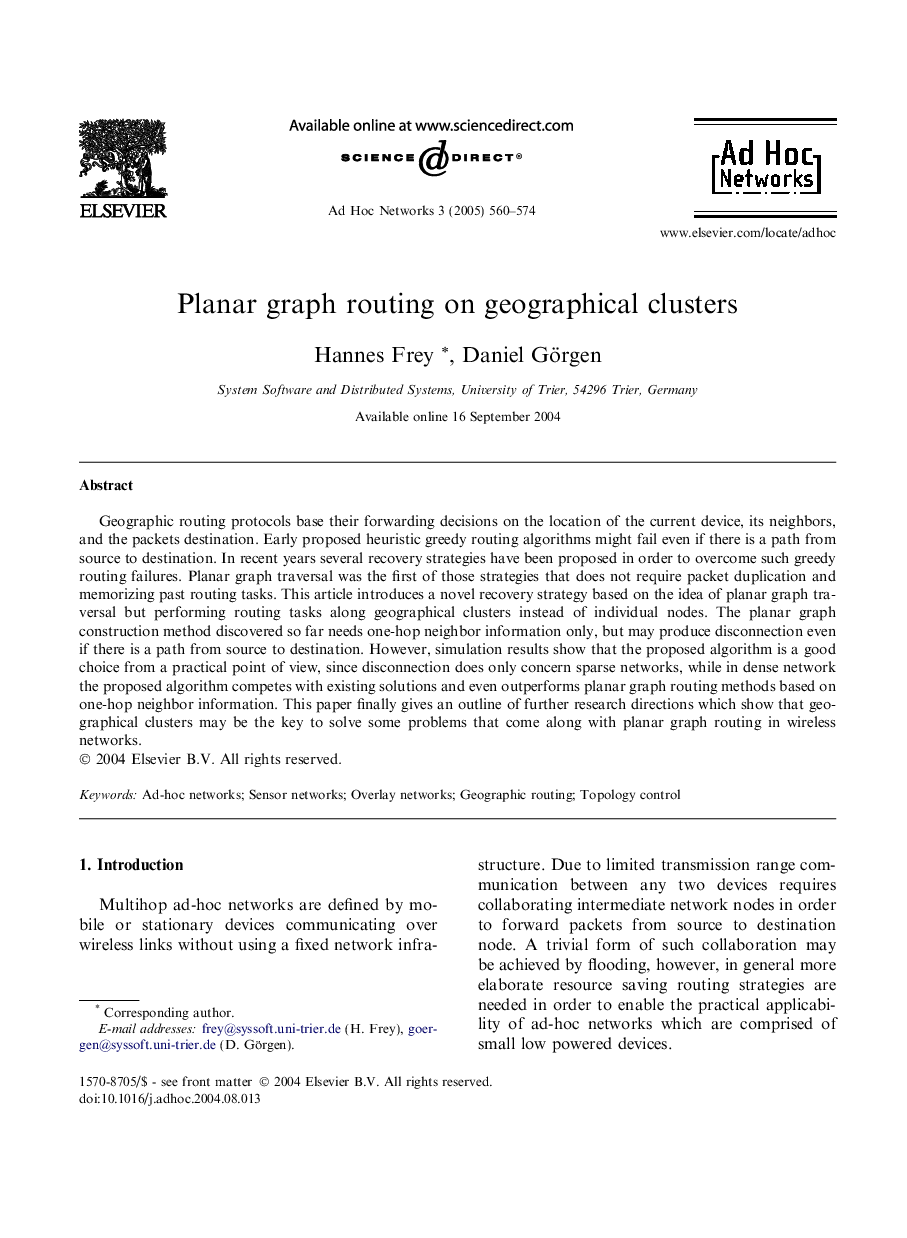| Article ID | Journal | Published Year | Pages | File Type |
|---|---|---|---|---|
| 10338070 | Ad Hoc Networks | 2005 | 15 Pages |
Abstract
Geographic routing protocols base their forwarding decisions on the location of the current device, its neighbors, and the packets destination. Early proposed heuristic greedy routing algorithms might fail even if there is a path from source to destination. In recent years several recovery strategies have been proposed in order to overcome such greedy routing failures. Planar graph traversal was the first of those strategies that does not require packet duplication and memorizing past routing tasks. This article introduces a novel recovery strategy based on the idea of planar graph traversal but performing routing tasks along geographical clusters instead of individual nodes. The planar graph construction method discovered so far needs one-hop neighbor information only, but may produce disconnection even if there is a path from source to destination. However, simulation results show that the proposed algorithm is a good choice from a practical point of view, since disconnection does only concern sparse networks, while in dense network the proposed algorithm competes with existing solutions and even outperforms planar graph routing methods based on one-hop neighbor information. This paper finally gives an outline of further research directions which show that geographical clusters may be the key to solve some problems that come along with planar graph routing in wireless networks.
Related Topics
Physical Sciences and Engineering
Computer Science
Computer Networks and Communications
Authors
Hannes Frey, Daniel Görgen,
